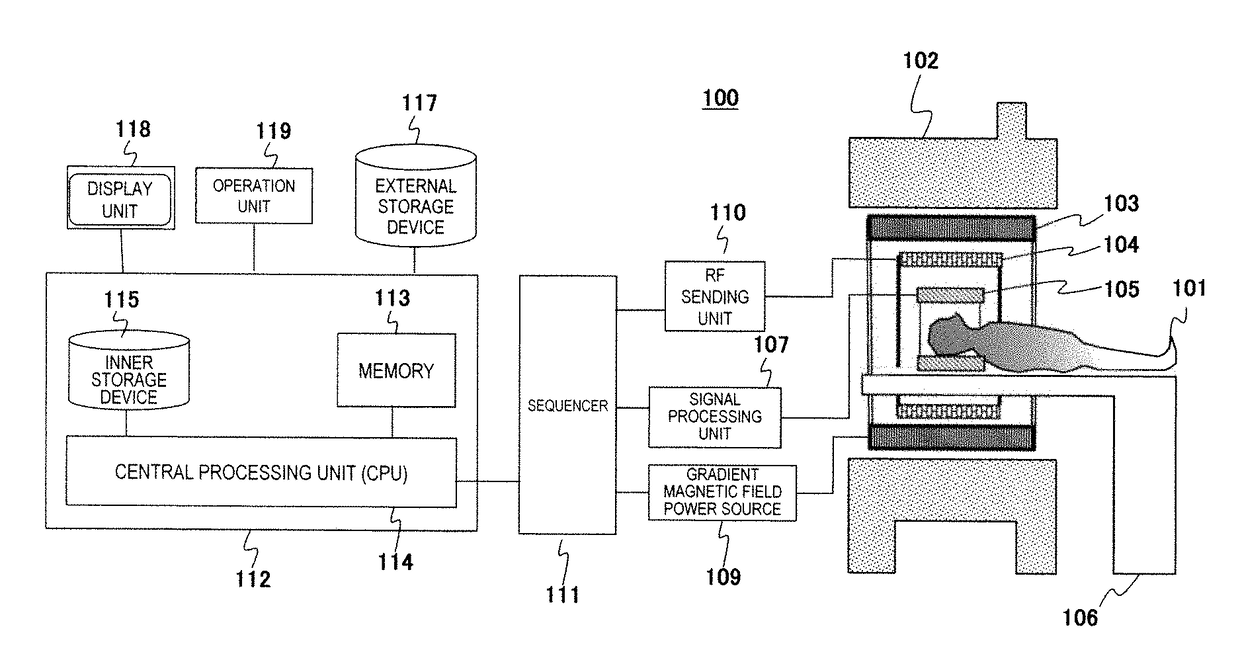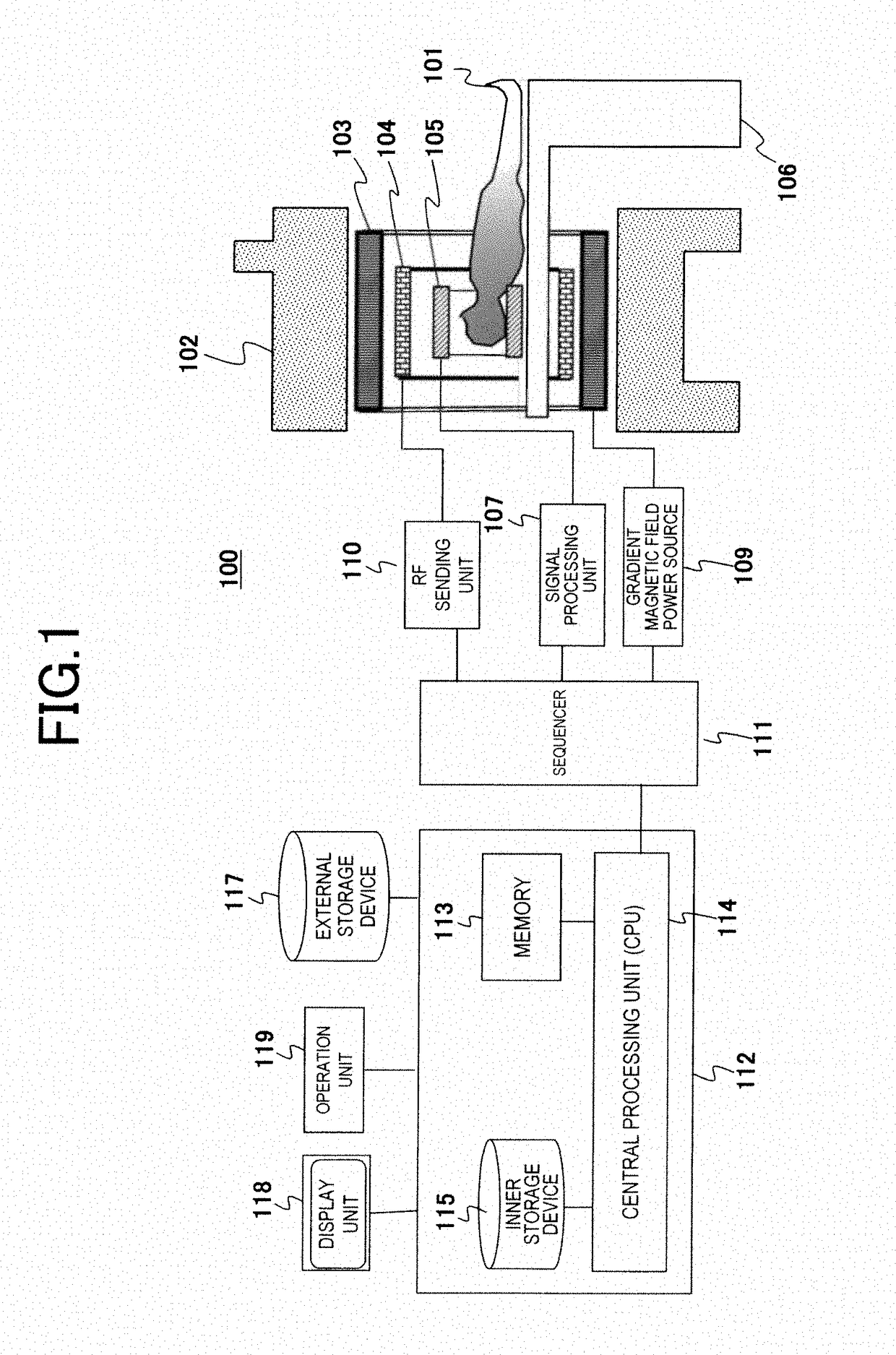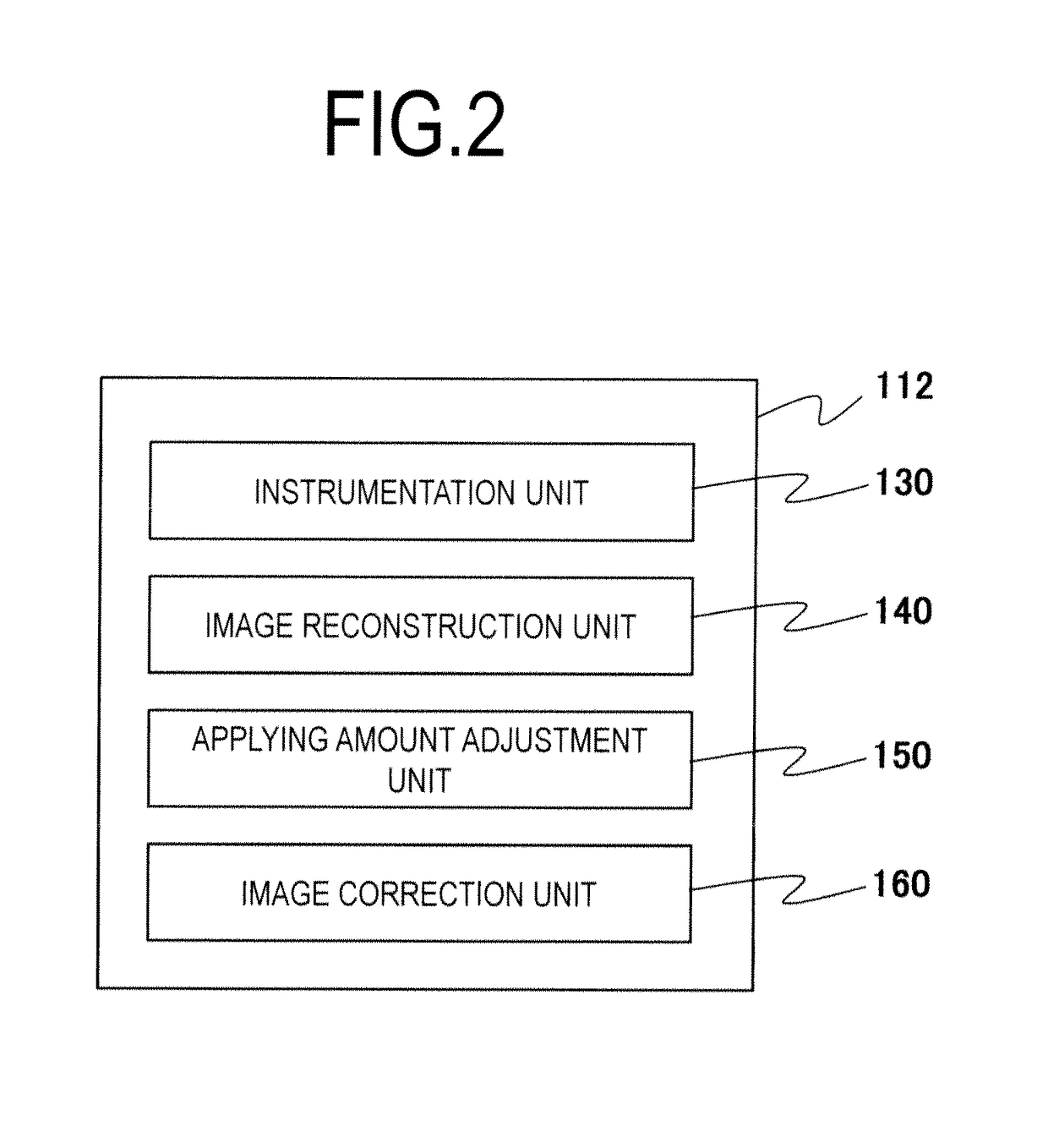Magnetic resonance imaging apparatus and magnetic resonance imaging method
a magnetic resonance imaging and apparatus technology, applied in the field of magnetic resonance imaging, can solve the problems of distorted magnetic field of gantry end units and interference in diagnosis, and achieve the effect of suppressing cusp artifacts
- Summary
- Abstract
- Description
- Claims
- Application Information
AI Technical Summary
Benefits of technology
Problems solved by technology
Method used
Image
Examples
first embodiment
[0043]Hereinafter, an example of embodiments of the present invention will be described with reference to the attached drawings. In addition, in all of the drawings for describing the embodiments of the invention, basically, those having the same functions are given the same reference numerals, and the repeating description will be omitted.
[0044][Block Diagram of MRI Apparatus]
[0045]First, an MRI apparatus of the embodiment will be described. FIG. 1 is a block diagram illustrating the entire configuration of an example of an MRI apparatus 100 of the embodiment. The MRI apparatus 100 of the embodiment obtains a tomographic image of an object 101 by using an NMR phenomenon, and as illustrated in FIG. 1, the MRI apparatus 100 includes a static magnetic field generation source 102, a gradient magnetic field coil 103 and a gradient magnetic field power source 109, a high frequency magnetic field (RF) sending coil 104 and an RF sending unit 110, an RF receiving coil 105 and a signal proce...
example
[0136]As illustrated in FIGS. 3(a) and 3(b), the magnetic field distortion position 210 is at a position of ±250 mm in the Z-axis direction. The CASD gradient magnetic field (323odd, 323evn) is applied so that the phase shift becomes 1 / 4·π [rad] at the magnetic field distortion position 210 (±250 mm), the instrumentation is performed two times, and the spatial signal dispersion in a case of the echo signal to which the echo signal to which the obtained data is added is added, is illustrated in FIGS. 14(a) to 14(f). FIGS. 14(a) to 14(f) respectively illustrate the signal intensity and the phase which are similar to those of FIGS. 8(a) to 8(f). In addition, in FIGS. 14(a) to 14(c), a vertical axis is a signal intensity and a horizontal axis is a position in the Z-axis direction (distance from the original point: Distance [mm]). In addition, in FIG. 14(d) to 14(f), a vertical axis is a phase, and a horizontal axis is a position in the z-axis direction (Distance [mm]).
[0137]As illustrat...
second embodiment
[0178]Next, a second embodiment of the present invention will be described. In the first embodiment, the NSA which is the number of times of repetition is an even number, the instrumentation of which the polarity of the CASD gradient magnetic field (323odd, 323evn) is reversed is alternately executed, and by the addition, an image in which the echo signal from the magnetic field distortion position is suppressed is obtained. Meanwhile, in the embodiment, from the result of the instrumentation executed one time, an image in which the echo signal from the magnetic field distortion position is suppressed is obtained. Therefore, even when the NSA which is the number of times of repetition is an odd number, this case can be employed.
[0179]An MRI apparatus of the embodiment is basically the same as the MRI apparatus 100 of the first embodiment. However, a configuration of the CAS sequence which the instrumentation unit 130 follows is different. Hereinafter, the embodiment will be describe...
PUM
 Login to View More
Login to View More Abstract
Description
Claims
Application Information
 Login to View More
Login to View More - R&D
- Intellectual Property
- Life Sciences
- Materials
- Tech Scout
- Unparalleled Data Quality
- Higher Quality Content
- 60% Fewer Hallucinations
Browse by: Latest US Patents, China's latest patents, Technical Efficacy Thesaurus, Application Domain, Technology Topic, Popular Technical Reports.
© 2025 PatSnap. All rights reserved.Legal|Privacy policy|Modern Slavery Act Transparency Statement|Sitemap|About US| Contact US: help@patsnap.com



